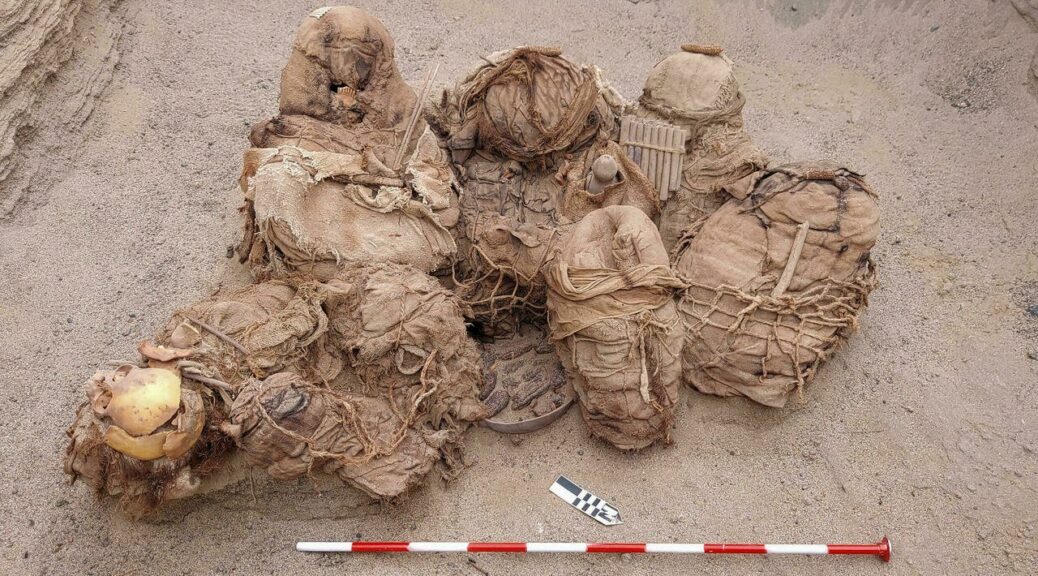Gas pipe workers find 800-year-old bodies in Peru
Gas pipe workers have discovered the remains of eight people, who were buried alongside musical instruments and food in Peru 800 years ago. Bodies of adults and children had been covered in plant material before being buried, at the site in Chilca, Peru, which is about 37 miles (60km) south of Lima.
Workers laying gas pipes found the remains with corn, dishes, and a variety of wind instruments, including flutes, placed around them.
Cecilia Camargo, an archaeologist hired by the Calidda gas company, whose workers made the discovery, said it provides information on pre-Hispanic Chilca.

The history of Chilca dates back to about 7000 BCE, with houses discovered going back as far as 5800 BCE, according to archaeologists.
The recently discovered remains were of people alive around 1220 CE, during the rise of the Inca empire, but are said to belong to the Chilca culture, which remained isolated from other pre-Hispanic cultures in the area.
The Incan empire reigned until the Spanish arrived in the sixteenth century when the Hispanic era began.
Some of the eight people found in the shared tomb had been buried with shells on their heads and had bags in which coca leaves, traditionally chewed as a stimulant, are kept.
Workers of the same company found another 30 ancient bodies in Chilca in 2018 as part of efforts to lay gas pipes.
For nearly two decades, workers for Calidda, building gas lines across Peru’s capital, Lima, have found themselves unearthing a treasure trove of history.


In 2018 the team came across four burials accompanied by ceramics from a pre-Incan civilization. Two years earlier, they found the bodies of farmers who had been among the first wave of Chinese immigrants in the 19th century.
‘Lima literally sits atop a cultural bank,’ with one layer of history atop another, Alexis Solis, an archaeologist working for Calidda national gas, said last year.
The Colombia-based company says it has installed about 6,000 miles (10,000 kilometres) of natural gas lines across Lima over the past 16 years.
As part of this effort, it has reported about 300 archaeological finds, some of them 2,000 years old and spent $2 million on the archaeological effort.
Peruvian law requires that archaeological discoveries be reported and turned over to the Culture Ministry, but some developers haven’t followed the law.
In 2013, workers for real estate developers destroyed a 4,500-year-old pyramid-shaped structure on the edges of the capital city Lima.
Lima is located in a valley irrigated by three rivers fed from the Andes, and housed human civilisations thousands of years before the Spanish arrived in 1535.
It is scattered with cemeteries, irrigation canals, structures and ancient roads, with thin, vulnerable layers of deposited earth separating vastly different eras.
‘The physical difference between the present and antiquity is but a few centimetres,’ Solis said in an interview last year.


